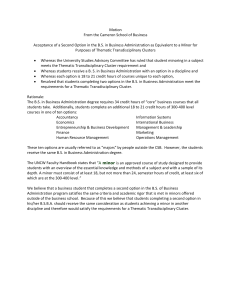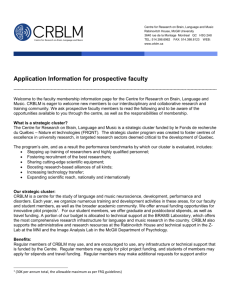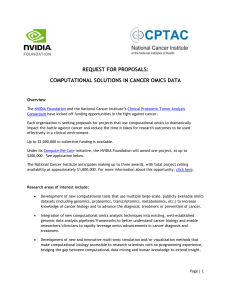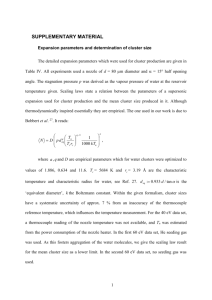cluster group of individuals.
advertisement
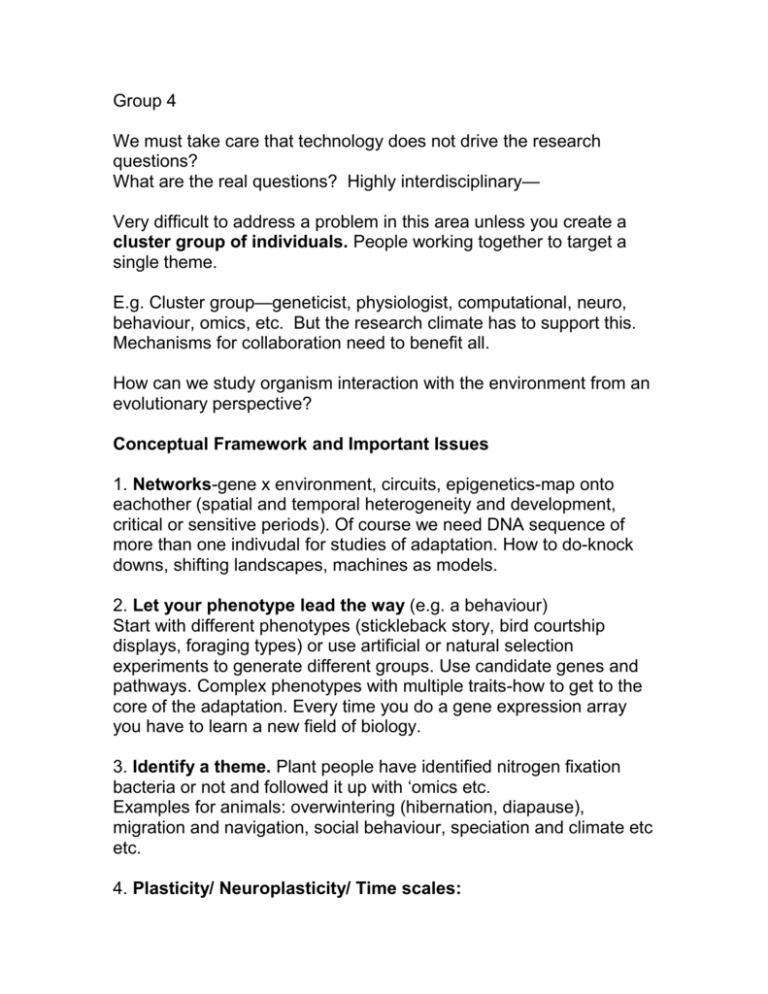
Group 4 We must take care that technology does not drive the research questions? What are the real questions? Highly interdisciplinary— Very difficult to address a problem in this area unless you create a cluster group of individuals. People working together to target a single theme. E.g. Cluster group—geneticist, physiologist, computational, neuro, behaviour, omics, etc. But the research climate has to support this. Mechanisms for collaboration need to benefit all. How can we study organism interaction with the environment from an evolutionary perspective? Conceptual Framework and Important Issues 1. Networks-gene x environment, circuits, epigenetics-map onto eachother (spatial and temporal heterogeneity and development, critical or sensitive periods). Of course we need DNA sequence of more than one indivudal for studies of adaptation. How to do-knock downs, shifting landscapes, machines as models. 2. Let your phenotype lead the way (e.g. a behaviour) Start with different phenotypes (stickleback story, bird courtship displays, foraging types) or use artificial or natural selection experiments to generate different groups. Use candidate genes and pathways. Complex phenotypes with multiple traits-how to get to the core of the adaptation. Every time you do a gene expression array you have to learn a new field of biology. 3. Identify a theme. Plant people have identified nitrogen fixation bacteria or not and followed it up with ‘omics etc. Examples for animals: overwintering (hibernation, diapause), migration and navigation, social behaviour, speciation and climate etc etc. 4. Plasticity/ Neuroplasticity/ Time scales: study stem cells in song birds from an adaptive perspective, evolution of learning, social insects castes etc etc. Temporal and spatial resolution. Genetic variation/ phenotypic plasticity. Role of gxe and epigenetics in all of this. Brain and body. 5. Computational approach. Huge data sets have been generated but context can be lost-where when and why-shared protocols needed. Recently there is more opportunities for sequencing the genome or transcriptome for a defined problem and the cost is becoming less and less! Sample across space and time. Shared data good for bench marking purposes and sometimes comparison across species can work (foraging flies and bees) but often not. 6. ‘Omics’ analyses are correlational. When do you need to show cause and effect? Depends on the question you are asking. How can causation be demonstrated? 7. Micro scale sensing systems-a priority. Mini sensing system- can do birds heart rate during behaviour but we want to do a single cell neuronal recording or reporting. Optogenetics-develop conserved molecules. Imagers for small animals (there are rat imagers-adapt for a bird). Can put animal in a scanner and present it with images, smell, olfaction and record brain images. This may also help us understand parts of the brain that could be used in ‘omics’ analyses. Lab-field interface-take the lab to the animal. Adapt existing technologies to do this. . Many challenges require many specialists –need cluster groups. Hire at universities this way. Problem, Mismatch between the speed of science and the speed of granting-especially in the speed of advancement in ‘omoics’ and nanotech. Suggestions: SMALL GRANTS Provide a small grant competition to a particular researcher for a specific project of this type, short writeup. Transdisciplinary expertise is required including computational expertise hence CLUSTER GROUP GRANT FUNDING TRAINING: Train a new cohort of individuals in transdisciplinary research. Have dual supervision in different areas of expertise. Project has to be transdisciplinary. Several month placements in different labs. CULTURE CHANGE: Reward for collaboration-federal gov’t Non-tenured professors encouraged to collaborate and be part of a cluster group. Hire people into cluster groups (not Noah’s ark-one of each). Nurture and help people who work at the edges of disciplines. Train in multiple labs/areas need more computation.


